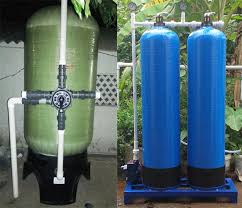Sand filters are a crucial component in maintaining clean and clear water in various applications including swimming pools and industrial processes. Their simplicity and efficiency make them a popular option for water filtration, but knowing how they operate and their advantages can aid in making the most out of this vital device.
How Sand Filters Work
At the heart of a sand filter (فیلتر شنی) is its filtration medium: sand. The filter is a container filled with a layer of sand, through which water flows. As water moves through the sand bed contaminants such as dirt, debris and other particles are kept within the sand. The sand layer effectively removes pollutants through physical and biological processes.
Types of Sand Filters
There are several types of sand filters, each suitable for different uses:
Sand Filters for Pools Sand Filters: These are designed to keep swimming pool water clean. They use a layer of specially graded sand to catch particles and debris. The filters in the pool are famous for their low maintenance and high efficiency.
Pressure Sand Filters: Often used in industrial settings, these filters operate under pressure to boost flow rates and filtration efficiency. They are ideal to treat large amounts of water.
Slow Sand Filters: Common in municipal water treatment facilities, slow sand filters employ a slower filtration rate to allow for biological processes that aid in removing pollutants. They are highly effective but require regular maintenance and regular cleaning.
Rapid Sand Filters: These filters utilize a higher flow rate and come with backwashing capability to eliminate obstructions. They are typically used for large water treatment plants.
Benefits of Sand Filters
Cost-Effective Sand filters are typically cheaper than other filtration methods, and are low in operational expenses. Their simplicity also means that they have fewer mechanical components that could break down.
The low-maintenance approach to maintenance generally involves backwashing to get rid of accumulated debris. This process is straightforward and doesn’t require specialized equipment.
Durability Sand filters are constructed to last and can withstand an enormous amount of water with minimal wear and tear. This makes them a safe option for residential and commercial applications.
Highly Effective Filtration can provide an efficient filtering system for a variety of particle sizes, ensuring the water is clean and clear.
Maintenance Tips
To ensure that the sand filter functioning optimally, it is essential to clean the filter in order to eliminate stuck particles and to prevent the clogging of. Also checking and replenishing the sand on a regular basis is vital to maintain efficient filtration.
In short, sand filter are a practical, efficient and cost-effective option for water filtration. Understanding the various kinds and their specific uses can assist you in selecting the best sand filter for your needs and ensure that it will function effectively for the years to be to.
